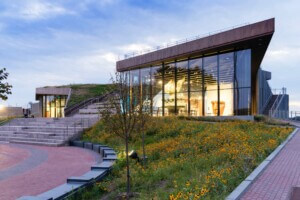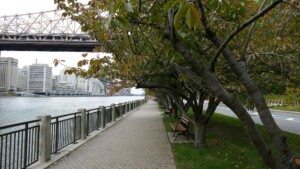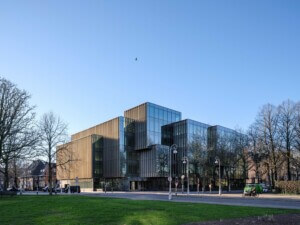Following NYC Mayor Bill de Blasio’s “ban” on glass-clad buildings in April, a leading sustainability expert in London has spoken out against London mayor Sadiq Khan’s refusal to enact the same legislation—Simon Sturgis, an adviser to the Greater London Authority and a chairman of the Royal Institute of British Architects’ (RIBA) sustainability group, believes that England’s capital should follow suit.
While de Blasio’s “ban” was in actuality proposed as a check on excessive use of glass and steel, glass is an inherently problematic building material to use in a world facing a climate crisis and rampant carbon emissions. Sturgis told the Guardian that, “If you’re building a greenhouse in a climate emergency, it’s a pretty odd thing to do, to say the least.” The two cities of New York and London are home to iconic skyscrapers like The Shard and the World Trade Center, both considered pinnacles of glass and steel construction, but while their uninterrupted views and the striking skyline aesthetic attract architects and high-profile tenants at the moment, the environmental irresponsibility may soon phase the desirability out.
“Big commercial tenants don’t like standing up in front of their shareholders and saying they’re doing embarrassing things,” said Sturgis.
Glass facades have a short life span, only about 40 years, so the impact of their embedded carbon (how much carbon a product will emit over the course of its entire life) is significant, as a building’s glazing is nearly impossible to recycle and inevitably necessary to replace. However, the more immediate consequences of these glass facades is a heavy need for air conditioning. The amenity’s adverse environmental impacts are well documented—almost 14 percent of total global energy use stems from air conditioning, and the heat captured and retained in building interiors by glass curtain walls is significant, especially in the summer heat.
In the same article, head of sustainability at Mitsubishi Electric, Martin Fahey, stated that rising temperatures across the globe has led to AC equipment needing to work much harder than in the recent past. “Most air conditioning equipment is designed to give an internal temperature between seven-to-ten degrees lower than the ambient temperature,” he said. But when the recent heat waves struck London and New York this summer, cooling from 100 degrees Fahrenheit to a more comfortable 70 took a toll on local electrical grids as well the air conditioners themselves. Broken AC units and their subsequent replacements add to the embedded carbon footprint of our built structures.
Advanced glazing and passive cooling options exist today that can minimize the greenhouse effect of glass, like darkening to let in less light in the warmer months, for example, the double- or triple- glazing systems are still hindered by the short life span and non-recyclability, and often not nearly at the level needed to amend the footprints of commercial emitters. Sturgis warns that “the connection needs to be made between the climate emergency and all-glass buildings. But the connection hasn’t been made yet.”











